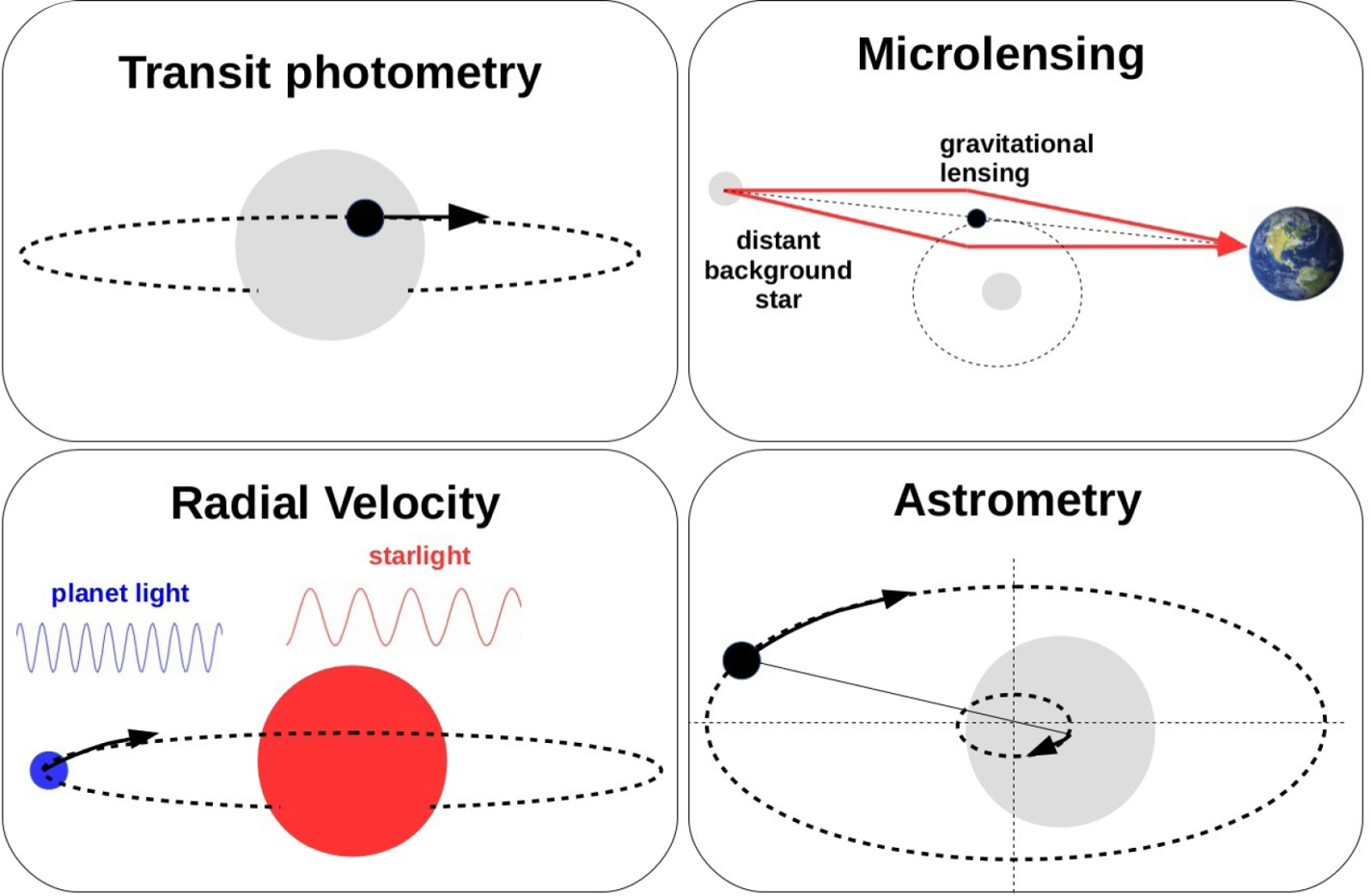Useful links:
- Selected presentations at slides.com

- Selected papers at NASA/ADS

- All refereed publications at NASA/ADS

系外行星的探测和刻画(Exoplanet detection & characterization)
 Planets
are extremely faint compared to their host stars, so how to find
them? Our group uses multiple indirect methods to detect and
characterize planets around stars other than our Sun. In
particular, together with Prof.
Shude Mao, we are actively involved in the Korea
Microlensing Telescope Network (KMTNet) project, which is
the leading survey in detecting exoplanet via the microlensing
method. Members of our Tsinghua team have led and contributed to
the discovery of dozens of microlensing planets, including most of
planets with planet-to-star mass ratio below ~10-4.
Planets
are extremely faint compared to their host stars, so how to find
them? Our group uses multiple indirect methods to detect and
characterize planets around stars other than our Sun. In
particular, together with Prof.
Shude Mao, we are actively involved in the Korea
Microlensing Telescope Network (KMTNet) project, which is
the leading survey in detecting exoplanet via the microlensing
method. Members of our Tsinghua team have led and contributed to
the discovery of dozens of microlensing planets, including most of
planets with planet-to-star mass ratio below ~10-4.
- Toward a Galactic Distribution of Planets. I. Methodology and Planet Sensitivities of the 2015 High-cadence Spitzer Microlens Sample. Zhu et al. 2017, ApJ
- Spitzer as a Microlens Parallax Satellite: Mass Measurement for the OGLE-2014-BLG-0124L Planet and its Host Star. Udalski et al. 2015, ApJ [NASA News]
- Constraining the Oblateness of Kepler Planets. Zhu et al. 2014, ApJ
系外行星统计(Exoplanet statistics)

As shown by the figure above, individual detection techniques have their own limitations, so how to combine them and derive the intrinsic distribution of planets across the whole parameter space? Our team models the observational bias and survey incompleteness and recovers the underlying planet distribution, especially key questions related to planet multiplicity. We then use these results to test and constrain the theoretical models of planet formation.
Selected publications:- Exoplanet Statistics and Theoretical Implications, Zhu & Dong 2021, ARAA [清 华新闻]
- About
30% of Sun-like Stars Have Kepler-like Planetary Systems: A
Study of Their Intrinsic Architecture, Zhu et al. 2018 ApJ
[NAOC Research News (Chinese
& English)]
- The Super Earth--Cold Jupiter Relations, Zhu & Wu 2018, AJ [知 识分子天问专栏][K2SciCon-V slides]
Other Projects
Our team is interested in a broad range of theoretical and observational topics:
- Compact object search via microlensing, astrometry, etc;
- Few-body dynamics;
- Other applications of microlensing than exoplanet;
- Time domain astronomy;
- ...
